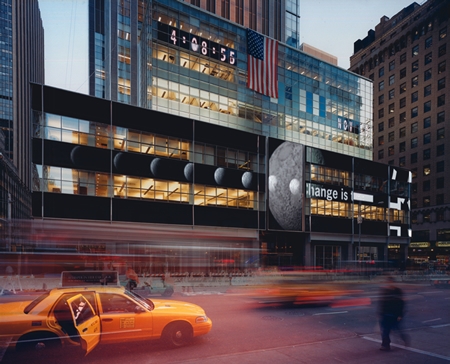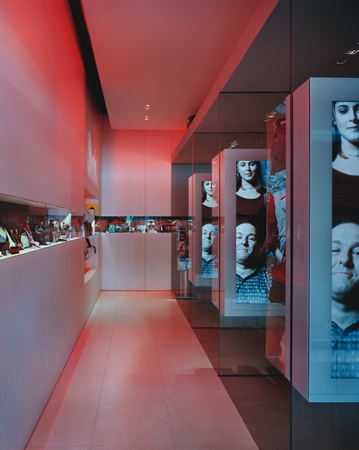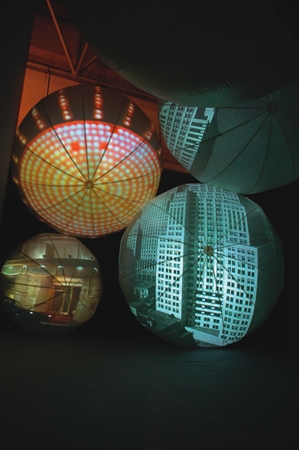The architecture in technological storytelling
 Tuesday, April 6, 2010 at 1:50AM
Tuesday, April 6, 2010 at 1:50AM 
For Morgan Stanley's home in Times Square, Imaginary Forces (IF), in collaboration with architectural firm Kohn Pedersen Fox, created a highly cinematic digital membrane that provides silent glances into the company and its inner workings.
In my last post I discussed the idea of the kinetic brand. Brands in motion. Brands that are dynamic. Brands on the verge (of re-defining what brands are). Brands that should be fluid, agile and constantly evolving, and when designed well, feel the same, but don't necessarily look today, like they did yesterday.
The post was inspired by my friend Tali Krakowsky, who, believe me, has a bright, bright future. This past February I took a jaunt out to the west coast to hang with her and a few other good friends. It was a great trip with lots of relaxation, discovery and learning.
Just yesterday Creativity Magazine announced her new venture.
Experience designer Tali Krakowsky has launched her own venture, Apologue, "dedicated to the creation of immersive storytelling environments."
Krakowsky, who blogs for On Design, had previously been Director of Experience Design at Imaginary Forces and, later, WET Design. Israeli-born and Hong Kong raised, Krakowsky studied Communication Design at Parsons School of Design and has a Master of Arts from UCLA's School of Architecture.
"We expect our physical spaces to seamlessly embody basic technologies, including electricity, lighting and phone lines," says Krakowsky. "We demand that our cars be intelligent enough to know how fast they're driving, how much fuel is left in the tank, and when there is an internal malfunction. While a decade ago a mobile phone was just that, today we presume that our mobile devices will deliver real-time access to all the data in the world. And still, our architecture remains analog and silent. In the very near future we will place the same kind of demands on our spaces."
Krakowsky says she founded the company "to facilitate the creation of places that speak to an emerging generation that has a different relationship to the world" and says the applications of experience design - for brands as well as museums, real estate developers and architects – are limitless. "Retailers can offer consumers highly directed and curated shopping experiences while learning about how their stores and products are being used. Amazon has learned how to do this but there is noting in physical architecture that does this kind of work with data."
Congrats Tali! I'm definitley looking forward to a Cnvrgnc + Apologue production, hopefully in the not-to-distant future. . .
Below are a couple more cool examples of her work while she was at Imaginary Forces.

For the HBO Store in midtown Manhattan, IF and Gensler designed a fully immersive media experience. Seamlessly integrating LED, LCD, and projection technology, the space became a platform for highly choreographed HBO-based show
 In celebration of post-war New York art, the Prince of Monaco commissioned a show in the Grimaldi Forum in Monte Carlo. Projecting content onto eight giant weather balloons, IF, in collaboration with architect Greg Lynn, re-imagined the cinematic experience for the architecture gallery of the exhibit
In celebration of post-war New York art, the Prince of Monaco commissioned a show in the Grimaldi Forum in Monte Carlo. Projecting content onto eight giant weather balloons, IF, in collaboration with architect Greg Lynn, re-imagined the cinematic experience for the architecture gallery of the exhibit


Reader Comments (1)